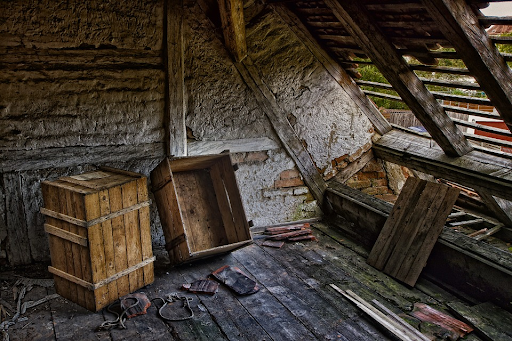
No one likes to deal with property problems. They’re often expensive, time-consuming, and frustrating. But what’s even worse is when those problems lead to a decrease in your property value. Many homeowners are faced with these property problems and wish for a quick fix. That’s why we’ve compiled the top most common property problems that lead to depreciating your property’s value, with tips on how to solve them. Keep reading!
Damp and Mould
Damp and mould can grow on walls, windows, ceilings, insulation, pipes, and almost anywhere else in your home. Once the dampness has started to cause mould growth on your walls or inside your window frames, it’s too late – you’ve got a problem. In the blog post Damp and Mould Issues in Rental Properties, mould growth is caused by different types of damps. These types include condensation damp, penetrating damp, and rising damp. It usually happens when cracks in the roof cause water to penetrate the house. Mould can grow up to three inches thick in just 48 hours if left untreated!
What are the effects? Unfortunately, once your walls have started growing black spots, they’re likely beyond repair. Your home will lose its value because of this, as well as potential buyers being turned off by the damage.
How to solve: You can’t just remove black mould from your walls and expect that that will be the end of it. What you need is a professional remediation company that’s experienced in dealing with damp and mould. If you’re a landlord, this is your responsibility, so make sure to find a company that could help you as soon as possible. If you react quickly, you will prevent further mould development, which can lead to even more significant problems.

Problems With The Roof
Problems with the roof are a big problem, both for homeowners and property buyers. There’s nothing more unattractive than shingles falling off your home or obvious leaks during rainstorms. If you’re experiencing these issues, there are likely more significant problems under your shingles, like missing or rotten wood. And this will only lead to more critical issues in the future, which will exponentially decrease your home’s value.
Not only does a leaky roof lead to the obvious and expensive problem of interior water damage, but, as we already mentioned, it also leads to mould growth, and rot can often be found underneath shingles. This means that you’ll likely have to replace not just your shingles but also part of your entire roof’s structure.
The best thing would be to call in a roofing contractor who can assess the damage and offer the best course of action to solve this problem.
Bad Neighbours
Believe it or not, the quality of your neighbours may lead to a decrease in property value. If you’re constantly dealing with noisy neighbours, late-night parties, or any other disturbances, then it’s likely that house hunters are not going to want to deal with that. There are, unfortunately, no laws against how much noise your neighbours make, but there are ways around interfering. For example, soundproofing your home could be an option for you if you’re dealing with noisy neighbours. Also, if your neighbours seem to be breaking the law by hosting all-night parties, then calling the police might solve that issue.
Proximity to Certain Facilities
Proximity to certain facilities is yet another big problem. If your home is too close to an airport, a busy road, or even a waste disposal facility, then it’s going to deter potential buyers from purchasing your property. Sometimes proximity issues can be solved with a simple fence or hedges, but that could block the view of your beautiful home.
What are the effects? The effect of being close to something undesirable is that your home’s value decreases, and you’ll have to find a buyer who wants explicitly to live near an airport or busy road, for example.
How to solve: You can’t just move your four-bedroom house away from the problem facility, so one of the few things you can do is find a buyer who’s willing to purchase your home regardless.
A Messy Yard
The yard is the first thing potential buyers look at, so it’s vital to keep yours as appealing as possible. Unkempt yards are unattractive and convey a sense of poor maintenance, which means your home will have a hard time selling itself.
A messy yard has the same effect as a leaky roof or noisy neighbours: It will depreciate your property’s value. If you currently own a muddy yard, it might be time for some renovations.
To solve this problem, you’ll need to do something about that grass and fence before someone decides to buy (or not to buy) your home based on its dishevelled exterior. Also, try to plant some brightly-coloured flowers to attract buyers walking by.
Stained Carpets or Floors
Last but not least, stained or dirty carpets and floors (especially in the kitchen and bathroom) will always lead to a loss of home value. Buyers don’t like replacing kitchen cabinets just because they have stains on them, for example.
Not only does it come across as unhygienic and unclean, but according to research, it also means that your home’s value decreases by up to two per cent. So if you’ve got a few stains here and there, then chances are you’ll lose some money on the deal.
How to solve: The best solution is to replace stained floors and carpets with new, clean ones. An alternative would be to get a carpet repair service on your side. They can fix up stains without you needing to replace the entire flooring material.
If there’s one thing all buyers agree on, it’s this: Your home needs to be clean and fresh. Homebuyers don’t want to buy a home that looks like its owners haven’t taken care of it for years. That’s why keeping your house clean is key to selling it fast and also selling it at a price you’re happy with. Of course, it may not be possible to keep your house spotless all the time, but try to do a light clean every week, and you’ll notice a difference in no time.




 POSTED BY
POSTED BY 

